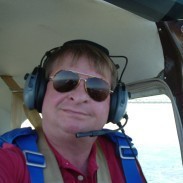JerryBaumchen 1,457
Hi captain,
Isn't this the same thing that killed the young Thacker kid at the Nationals one year?
I was not there but a good friend was and this is what he told me. Maybe rumor - maybe true.
Also, a fellow doing a demo at the Abottford Air Show back in the 60's got killed this way. He always said that he would never do a cutaway and he didn't.
JerryBaumchen
Quoteunfortunately the reserve went right up into his main and he was killed.
Isn't this the same thing that killed the young Thacker kid at the Nationals one year?
I was not there but a good friend was and this is what he told me. Maybe rumor - maybe true.
Also, a fellow doing a demo at the Abottford Air Show back in the 60's got killed this way. He always said that he would never do a cutaway and he didn't.
JerryBaumchen
QuoteHi captain,
Quoteunfortunately the reserve went right up into his main and he was killed.
Isn't this the same thing that killed the young Thacker kid at the Nationals one year?
I was not there but a good friend was and this is what he told me. Maybe rumor - maybe true.
Also, a fellow doing a demo at the Abottford Air Show back in the 60's got killed this way. He always said that he would never do a cutaway and he didn't.
JerryBaumchen
Jerry,
Don't know about the others, but the theory sounded good at the time. Why cut away something and take a chance on the reserve not opening?
A shame the facts cost these people their lives.
You live more in the few minutes of skydiving than many people live in their lifetime



I knew Stoyas, major S&A competitor way back when.
I didn't realize that was how he died, I remember stories about playing with the malfunction WAY too long, seeing he was low and just firing the reserve...didn't know it was 'pre-planned'.
It very well could be that he was too low and just fired the reserve, but the way he always supported the canopy transfer led me/us to believe this is what he was doing. Since I was the pilot on that load, I can only go by what the people on the ground observed.
He did in fact know that he screwed up, as he was shouting on the way down "what am I doing", What am I doing".
Very sad, he was a great guy and good friend.